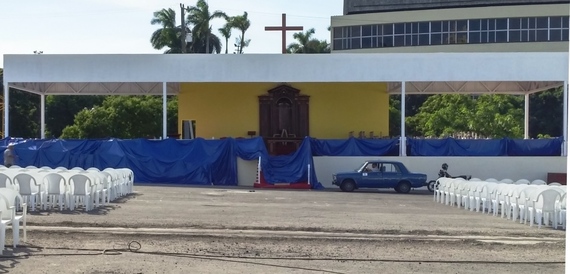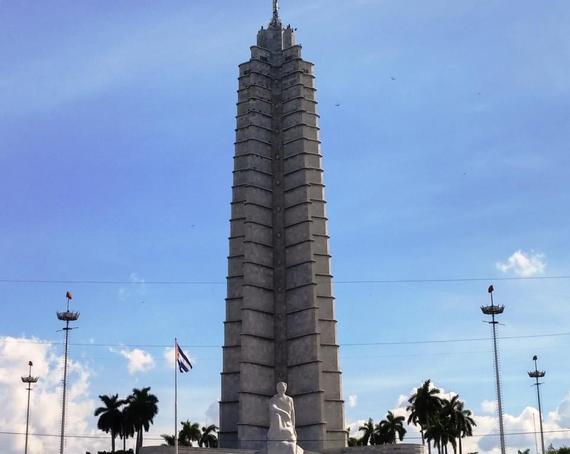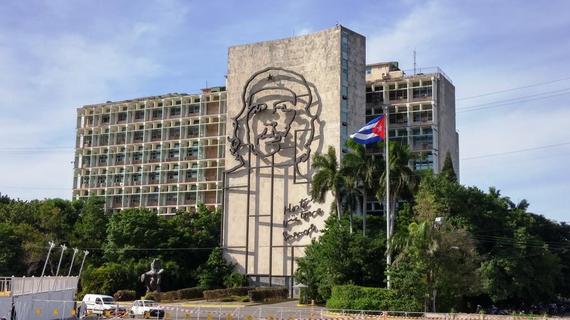Spirituality in Cuba today reflects the country's diversity and colonial roots. Despite the communist government's previous repression of religious expression, Cubans are now "free to practice whatever they want," according to the Cuban guide of a cultural tour I took of Havana, just a week before the arrival of Roman Catholic Pope Francis.
Spanish settlers brought Catholicism to Cuba in the early 1500s. Within a century, colonial germs and activities had wiped out the native population and most of its cultural practices. By the 1700s, Africans were being brought to the island and enslaved. Their work soon became essential to Cuban commerce.
While slaves, Africans were often made to attend Catholic mass. Over the years, Catholic practices blended with African religious traditions, including the worship of numerous deities. An example is Ochun -- symbol of motherhood and water. Our guide describes the goddess as open-hearted and sensual, adding, "All men are in love with Ochun."
The melding of Catholic and African beliefs became known as Santería. In 2010, the Pew Forum estimated that about 60% of Cubans are Christian ("mainly Catholics"), 23% are unaffiliated, and 17% practice "folk religions," such as Santería.
As of 2015, according to our guide, many Cubans don't have a religion, per se, but have faith and "do [spiritual] things to help you achieve your goals."
Since the revolution in 1959, Catholic popes John Paul II, Benedict and now Francis, have acted as envoys between the U.S. and Cuba. On a trip to Rome in May, Cuban president Raul Castro thanked the Pope for his help in bettering relations.
While on his tour of Cuba, Pope Francis will say mass in Havana's vast Revolution Square. From the altar, the pontiff can gaze over the crowd at dramatic monoliths including the towering Jose Marti memorial and the Ministry of the Interior, which bears a huge image of the revolutionary, Che Guevara.
From Cuba, the Pope flies to Washington, D.C., where he'll meet with the president and address Congress. Among the many other activities on his U.S. tour is a speech in New York to the United Nations.
Considering what could soon be happening for their country, Cubans' hopes are buoyant. Our guide did not mince words about her compatriots' view of the Francis visit:
"The Pope is coming to help."

Reposted with permission from DurableHuman.com
For more of the author's newfound secrets of Cuba, sign up here.
Support HuffPost
Our 2024 Coverage Needs You
Your Loyalty Means The World To Us
At HuffPost, we believe that everyone needs high-quality journalism, but we understand that not everyone can afford to pay for expensive news subscriptions. That is why we are committed to providing deeply reported, carefully fact-checked news that is freely accessible to everyone.
Whether you come to HuffPost for updates on the 2024 presidential race, hard-hitting investigations into critical issues facing our country today, or trending stories that make you laugh, we appreciate you. The truth is, news costs money to produce, and we are proud that we have never put our stories behind an expensive paywall.
Would you join us to help keep our stories free for all? Your contribution of as little as $2 will go a long way.
Can't afford to donate? Support HuffPost by creating a free account and log in while you read.
As Americans head to the polls in 2024, the very future of our country is at stake. At HuffPost, we believe that a free press is critical to creating well-informed voters. That's why our journalism is free for everyone, even though other newsrooms retreat behind expensive paywalls.
Our journalists will continue to cover the twists and turns during this historic presidential election. With your help, we'll bring you hard-hitting investigations, well-researched analysis and timely takes you can't find elsewhere. Reporting in this current political climate is a responsibility we do not take lightly, and we thank you for your support.
Contribute as little as $2 to keep our news free for all.
Can't afford to donate? Support HuffPost by creating a free account and log in while you read.
Dear HuffPost Reader
Thank you for your past contribution to HuffPost. We are sincerely grateful for readers like you who help us ensure that we can keep our journalism free for everyone.
The stakes are high this year, and our 2024 coverage could use continued support. Would you consider becoming a regular HuffPost contributor?
Dear HuffPost Reader
Thank you for your past contribution to HuffPost. We are sincerely grateful for readers like you who help us ensure that we can keep our journalism free for everyone.
The stakes are high this year, and our 2024 coverage could use continued support. If circumstances have changed since you last contributed, we hope you’ll consider contributing to HuffPost once more.
Already contributed? Log in to hide these messages.



